Fish are cold-blooded animals, also known as ectothermic animals. This means that their body temperature is not internally regulated and instead depends on the temperature of their surrounding environment. Let’s dive deeper into what this means, why it's important, and how it affects the lives of fish.
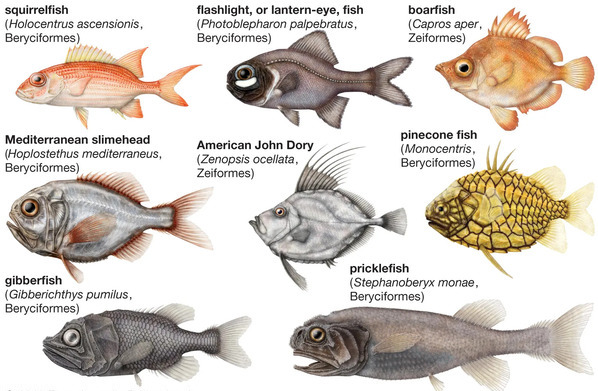
In the animal kingdom, being cold-blooded (ectothermic) means that an animal doesn’t maintain a constant internal body temperature. Instead, the temperature of the fish's body fluctuates with the water or air around it. This is different from warm-blooded (endothermic) animals, like humans, who can keep their body temperature steady regardless of the environment.
Fish rely on the temperature of the water to determine how warm or cold they are. For example, if they’re in colder waters, their body temperature drops. If they’re in warmer waters, their body temperature rises. This external temperature regulation has a huge impact on their behavior, metabolism, and even where they can live.
Fish evolved to thrive in a wide variety of environments—from freezing Arctic waters to tropical seas. Being cold-blooded helps them adapt to these diverse conditions. Since their bodies don’t need to burn energy to maintain a specific temperature, fish are more energy-efficient in some ways than warm-blooded animals. They don't need to eat as often, as their energy demands are lower, especially in cooler waters where their metabolism slows down.
However, this also means that fish are more vulnerable to environmental changes. When water temperatures fluctuate too much, fish can become sluggish, and their ability to hunt, escape predators, or reproduce may be affected.
Fish have developed various strategies to cope with temperature changes:
Migration: Some species, like salmon, migrate to different areas depending on the season. In cold months, they may seek warmer waters to keep their metabolism functioning properly.
Torpor: In extremely cold waters, some fish can go into a state similar to hibernation, called torpor. During this time, they become less active and reduce their energy use, waiting for warmer conditions to return.
Physiological Adaptations: Some fish, especially those living in the Arctic or Antarctic, have developed special antifreeze proteins in their blood, which prevent ice crystals from forming in their tissues.
Interestingly, while most fish are cold-blooded, a few species show warm-blooded traits. One example is the opah (also called moonfish), a deep-sea predator that can warm its body by circulating warm blood throughout its system. The tuna and some species of sharks also have partial warm-blooded abilities. These fish can maintain higher temperatures in certain parts of their bodies, like their muscles or brain, allowing them to swim faster and be more efficient hunters in colder waters.
Water temperature plays a significant role in the life of fish. It affects their:
Metabolism: In colder water, a fish’s metabolism slows down, meaning it needs less food and energy. In warmer waters, the metabolism speeds up, requiring more frequent feeding.
Behavior: Fish are typically more active in warmer waters. However, if the water gets too hot, they may become stressed or seek cooler areas to avoid overheating.
Breathing: Cold water holds more oxygen than warm water. So, in warmer environments, fish may need to work harder to breathe.
Reproduction: Many fish species need specific water temperatures to reproduce. If the temperature isn’t right, they might delay spawning or fail to reproduce altogether.
Fish are generally cold-blooded animals, relying on their environment to regulate their body temperature. This characteristic allows them to thrive in a wide variety of aquatic habitats, but it also makes them sensitive to changes in water temperature. While most fish are ectothermic, a few species exhibit warm-blooded traits, showing the incredible diversity of adaptations in the fish world. Understanding how fish interact with their environment helps us appreciate the complexity of life beneath the surface of the water.
there are warm-blooded fish, though they are quite rare. Most fish are cold-blooded, meaning they rely on the temperature of the surrounding water to regulate their body temperature. However, some fish have evolved the ability to maintain a warmer body temperature than the water they live in. This ability provides certain advantages, particularly in terms of speed, endurance, and hunting efficiency.
Let’s dive into the details of warm-blooded fish, the biological mechanisms that enable this ability, and why it is important for their survival.
Being warm-blooded (or endothermic) means that an organism can internally regulate its body temperature, often keeping it higher than the surrounding environment. This is in contrast to cold-blooded (ectothermic) animals, whose body temperature fluctuates with external conditions.
In warm-blooded fish, this ability is not usually as comprehensive as in mammals or birds. Instead, these fish maintain elevated temperatures in certain parts of their bodies, such as their muscles, eyes, brain, or heart, while the rest of their body may still be influenced by the water temperature. This partial warm-bloodedness is known as regional endothermy.
Only a few fish species are known to be warm-blooded. The best-known examples include:
Opah (Moonfish): The opah is the first fully warm-blooded fish discovered. It has the remarkable ability to warm its entire body, not just specific parts. The opah’s gill system helps retain heat in its body, allowing it to maintain an elevated temperature even in the cold depths of the ocean.
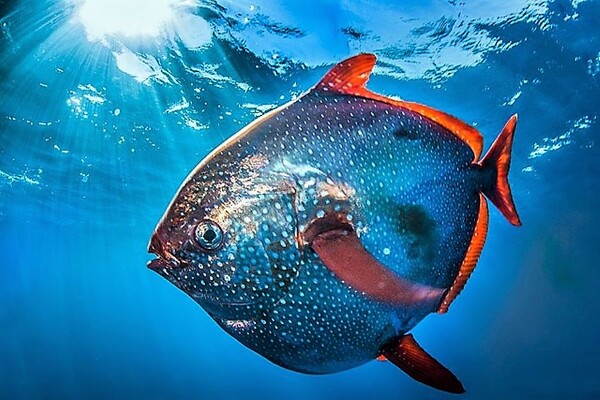
Tunas: Species of tuna, such as the bluefin tuna, are partially warm-blooded. They can heat their muscles, which enables them to swim faster and cover large distances in search of prey. The warmth also boosts their metabolic rate, giving them more energy and endurance.
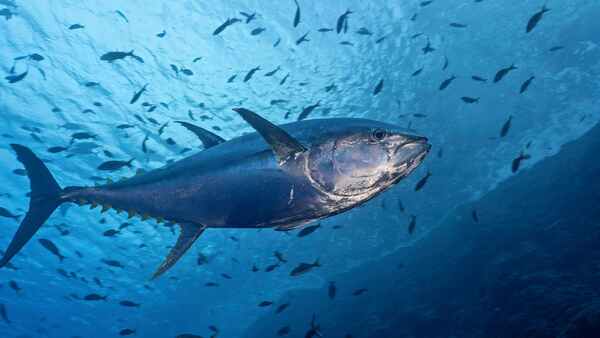
Lamnid Sharks: This group of sharks, which includes the great white shark, shortfin mako shark, and salmon shark, can maintain warmer temperatures in their muscles and other key body parts. This ability allows them to be more agile hunters, even in colder waters.
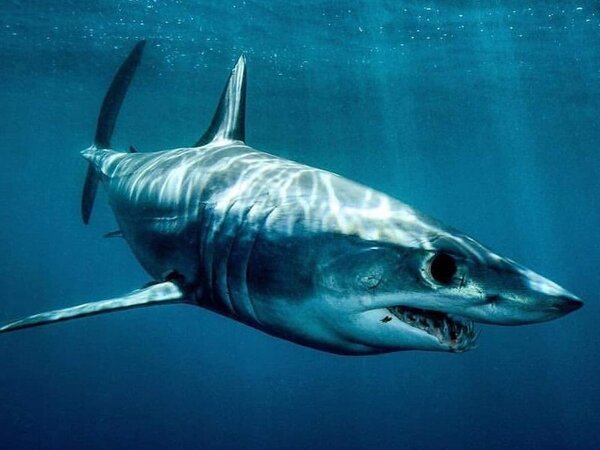
Billfish (Swordfish, Marlin): Some species of billfish, like the swordfish, can heat their eyes and brain, which improves their vision and reaction times while hunting in the cold, dark waters of the deep ocean.
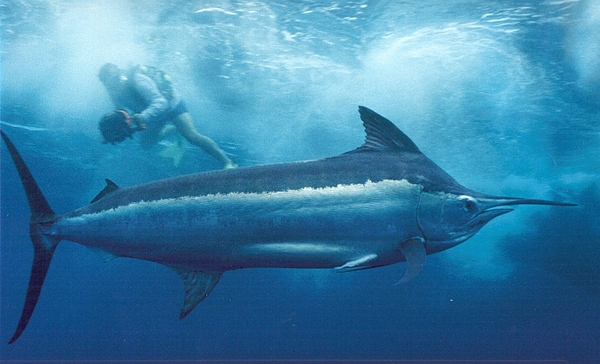
Warm-blooded fish use a combination of special anatomical adaptations and physiological processes to generate and retain heat. Here are some of the key mechanisms involved:
Counter-Current Heat Exchange: Many warm-blooded fish use a specialized structure called a rete mirabile (Latin for "wonderful net"). This system of closely aligned blood vessels allows heat generated by muscle activity to be transferred from warmer arterial blood to cooler venous blood. This process minimizes heat loss to the surrounding water and keeps certain parts of the fish’s body warmer than the environment.
In tuna and sharks, the rete mirabile helps keep their core muscles warmer, which is crucial for maintaining high swimming speeds and endurance.
Heat from Muscle Activity: The continuous movement of these fast-swimming fish generates heat. By retaining some of this heat in their muscles, they can keep their bodies at an elevated temperature, which gives them a competitive edge when hunting or migrating through colder waters.
Insulation Layers: Some warm-blooded fish have thicker layers of tissues or fat that act as insulation, helping to reduce heat loss. This is particularly important for species that swim at great depths or in cold water.
Warm-bloodedness provides several key advantages for fish:
Increased Speed and Endurance: By keeping their muscles warm, warm-blooded fish can swim faster and longer than cold-blooded fish. This makes them better hunters, especially when chasing down fast-moving prey like smaller fish or squid. It also allows them to migrate across long distances in search of food.
Enhanced Hunting Ability in Cold Water: Cold water typically slows down the movements of cold-blooded animals. However, warm-blooded fish can remain active and agile even in colder environments. This makes them more effective predators in deep or cold waters where prey may be less mobile.
Improved Vision and Brain Function: In species like swordfish, the ability to heat their brain and eyes gives them sharper vision and quicker reaction times, which is critical for hunting in the dimly lit, deep-sea environment.
Wider Range of Habitats: Warm-blooded fish can tolerate a broader range of temperatures, allowing them to venture into both cold and warm waters. This adaptability helps them access more diverse food sources and habitats than their cold-blooded counterparts.
While there are many benefits, warm-bloodedness also comes with some challenges:
Higher Energy Demands: Warm-blooded fish need to consume more food to fuel their higher metabolic rates. The process of maintaining a higher internal temperature requires a significant amount of energy, so these fish must be successful hunters to meet their dietary needs.
Heat Loss in Colder Waters: Although warm-blooded fish have adaptations to retain heat, they still lose some heat to the surrounding water. As a result, they must constantly produce heat to maintain their elevated body temperatures, which requires even more energy.
The opah (moonfish) is unique because it is fully warm-blooded. Discovered relatively recently to have this trait, the opah maintains its entire body at a temperature higher than the surrounding water. The fish achieves this through a specialized system in its gills that conserves heat from muscle activity.
The opah’s warm-bloodedness allows it to be a highly efficient predator in the cold depths of the ocean, where it can outcompete slower, cold-blooded fish. This gives it an advantage in capturing prey that might be sluggish in colder water temperatures.
Warm-blooded fish are fascinating exceptions in a world where most fish are cold-blooded. Species like the opah, tuna, sharks, and swordfish have evolved incredible adaptations to generate and retain body heat, giving them distinct advantages in terms of speed, endurance, hunting ability, and habitat range. These adaptations allow them to thrive in environments where most fish would struggle to survive.
While being warm-blooded helps these fish become more effective predators, it also requires them to consume more food and continuously produce energy to maintain their internal heat. This balance between the benefits and challenges of warm-bloodedness highlights the remarkable complexity of life in the ocean.
animal tags: fish
We created this article in conjunction with AI technology, then made sure it was fact-checked and edited by a Animals Top editor.